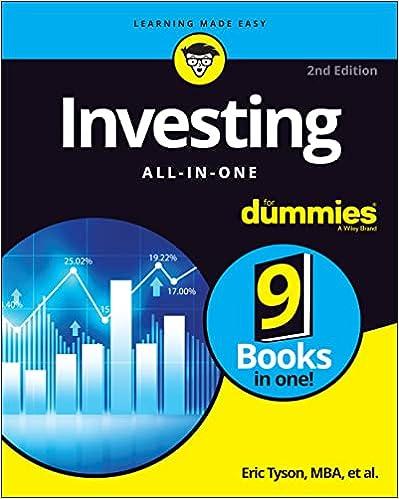Question
Big Bonds are Liquid Bonds Read the Finance in Action resource on page 355 of your text. Answer the following questions. Provide a brief refresher
Big Bonds are Liquid Bonds
Read the Finance in Action resource on page 355 of your text. Answer the following questions.
- Provide a brief refresher of the Dodd-Frank Act and the Volcker Rule associated with it.
- Do you agree with the risk Ventas has taken as a company?
- If you were an investor of corporate bonds and did your research, would you buy the Ventas bonds knowing the amount of this specific debt that has been issued?
- If you were a finance manager of a firm, would you use the same methods to raise capital? Why or why not?
Big Bonds Are "Liquid" Bonds
Corporate bond buyers have found that there can be safety in bigger bond deals amid a pullback in bond trading by big Wall Street banks. The Dodd-Frank law's "Volker Rule" bans U.S. banks from some proprietary trading. This ban makes it harder for the big banks to hold inventory for "making markets" in illiquid corporate bonds.
The difficulty in trading junk bonds has long been a factor in the high yield-to-maturity paid on these debt instruments. Certainly, junk bonds require high interest rates because they have credit risk, but they also often have liquidity risk. Credit risk is the risk that the bond's issuer will go bankrupt before the bond matures. Liquidity risk is the risk that if a bondholder wants to sell the bond prior to maturity, no one else will be eager to buy it.
Researchers Amihud and Mendelson (1986) showed that the most illiquid stocks have yielded monthly returns that are over 0.5 percent higher than the most liquid stocks. That is over 6 percent per year! Similarly, buyers of illiquid bonds require a higher return than liquid bonds. Simply put, many investors don't want to buy a bond if selling it later will be difficult.
The Wall Street Journal has reported that "investors are flocking to investment-grade bonds issued in amounts of $500 million or more, which are called benchmark deals. Bonds sold in big batches are performing better than smaller debt issued as part of smaller deals, data shows. Some companies have taken note and are boosting offerings in order to pass the $500 million threshold." One such company is Ventas, a publicly traded real estate investment trust.
In August of 2012, Ventas issues $275 million in senior debt due in August of 2022. Because of the low interest rate environment at the time, the yield on these 10-year bonds was only 3.25 percent. Then Ventas realized that issuing more of the same bonds might not cost them much more. In December 2012, Ventas issued another $225 million of the same bonds, taking the total to the $500 million benchmark. Ventas has acknowledged this it is "clearly wanting to create liquidity for our investors" by increasing the total size of its individual bond issuances.
Step by Step Solution
There are 3 Steps involved in it
Step: 1

Get Instant Access to Expert-Tailored Solutions
See step-by-step solutions with expert insights and AI powered tools for academic success
Step: 2

Step: 3

Ace Your Homework with AI
Get the answers you need in no time with our AI-driven, step-by-step assistance
Get Started


